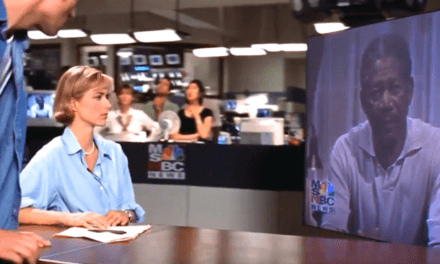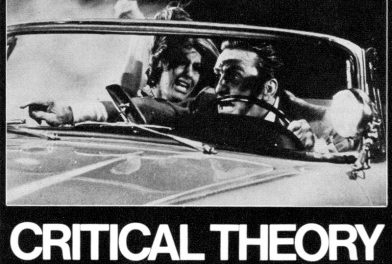Remember when ITV’s new flagship current affairs programme Exposure (26 September 2011, 22.35) was itself exposed for using videogame footage, claiming it showed IRA members trying to shoot down a British army helicopter in 1988?
This clunking mistake gets to the heart of our current mess about old TV footage, as the regulator Ofcom’s damning ruling makes clear.
The director, Clive Maltby, is no wet behind the ears graduate from a politics course with no real media training. His website makes clear that he has a distinguished record (though Exposure: Gaddafi and the IRA somehow isn’t mentioned). Yet there he was grabbing footage from YouTube in an edit. The account given to Ofcom beggars belief. It’s claimed the director had seen footage of a helicopter being shot down in an ITV Blood Money programme from 1989. This programme itself drew on an older ITV programme, an edition of the well-known Cook Report. Eight weeks later, unhappy with the brief nature of the footage from the 1989 programme, he tries to find the Cook Reportoriginal. Where does he look? On YouTube. What does he find? Something that looks to him like the footage he saw eight weeks previously, but it’s longer and, he claims, comes with a caption that identified it as being footage of a real event.
Meanwhile in another part of the programme team, researchers are trying to access footage from earlier in 2011 of a riot in Belfast. Where do they go for this very recent footage? One of the many commercial news libraries? The Ulster broadcasters’ own libraries? No, a local historian “who had supplied footage to various broadcasters in the past”. They got riot footage from him OK, but it was of an event several years earlier (no-one involved, not even Ofcom, is saying exactly when).
Of course this shows that the once-crucial role of archive researcher has now been eroded to the point of non-existence and that a last-minute edit decision was made on the basis that the available and accredited Blood Money programme was not enough to put behind a rather long chunk of voice-over. These are the realities of current affairs production.
But what’s remarkable first is that nobody in the eight weeks from the first viewing of Blood Moneywent back to the original Cook Report programme. Eight weeks is even enough time for the most probable source to disgorge it: the BFI’s National Film and TV Archive. And no-one went to the obvious sources for the 2011 riot footage but instead went to the archive world’s equivalent of a bloke they’d met down the pub who’d seen them alright once before.
The conclusions I draw are*:
- YouTube is used because it is a one-stop shop. Everything seems to be there. So why can’t the TV industry create something like it?
- YouTube is highly untrustworthy because its metadata (what it tells you about the footage you’re watching) comes from anywhere. Metadata is crucial in establishing the nature of footage. (YouTube can sometimes come up trumps. Watch the full extent of the link to an extract of the ITV Exposure footage and you’ll see something that might be the original footage that Clive Maltby used in his programme. If it is, where did the background music go? But then again, is this the footage he used? I can’t tell for sure, and there’s no metadata to help me decide…)
- Nobody wants to pay for anything, and everyone wants to charge. If you find footage from a trustworthy source, then the payment required can vary enormously. On tight budgets, that’s a real problem. So why can’t TV set a standard scale of charges?
- If you want something in a hurry, you haven’t the time to negotiate. Perhaps the reason why no-one from the production team sought out the original Cook Report footage was that they suspected that the BFI would confirm (after a few days) that they had it, and could even supply it (in a few days) if the programme team were willing to pay for it to be digitised (which they’d need, but would take a few days) but only if they first got permission from the rights owners. Who are Central TV. Or rather their successors. Who may well be ITV. Who are commissioning the programme that these people are working on. So job done… But hang on, didn’t someone else buy Central’s film library? (This is the kind of stuff I used to have to know, but cheerfully admit I don’t any more. Programme libraries are bought and sold distressingly often). The worst position for a researcher to be in is theirs: you know exactly what you need and where it is, but can’t get your hands on it.
- It’s easier to get stuff from a no-questions-asked source. Hence the ‘local historian’ connection. Copyright is based on a permission-in-advance model. Production timetables increasingly cannot accommodate this. So why not a use-first-pay-the-standard-rate-after principle? Copyright assumes that permission might be withheld. Surely a more sane regime in the current world is a model that assumes that permission will be granted?
Interestingly, this is an area where academia has something to offer. BUFVC has accumulated basic data on all broadcast material for the last decade, with selected records from earlier as well. So the basics of a one-stop shop do exist.
The right to keep off-air recordings for teaching and research has ensured that a lot of material like the original Cook Report may well exist in a university library (albeit on VHS). But the licence means it is restricted to academic use only. So at the moment, an academic library could not help a TV researcher to access this material. But there might be a way forward, based perhaps on the need to digitise those VHS tapes?
But behind all this is the madness of the copyright regime, which puts many obstacles between potential users of archival footage, those who preserve it, and those who have ownership rights over it. Those who own are very often not those who preserve. A standard licence agreement on a use-first-pay-after basis is surely the way forward. Otherwise YouTube will continue to be the source of choice for the deadline-haunted producer in an edit.
And for an illustration of why all this matters, take a look at this blog and the conclusions that the author is able to hang on the Exposure producer’s “mistake”:
*Usual disclaimer: I don’t excuse what happened here, but I can see why it did.
JOHN ELLIS is Professor of Media Arts at Royal Holloway University of London. He is the author of Documentary: Witness and Self-revelation (Routledge 2011), TV FAQ (IB Tauris 2007), Seeing Things (IB Tauris 2000) and Visible Fictions (1984). Between 1982 and 1999 he was an independent producer of TV documentaries through Large Door Productions, working for Channel 4 and BBC. He is chair of the British Universities Film & Video Council and leads the Royal Holloway team working on EUscreen. His publications can be found HERE.





